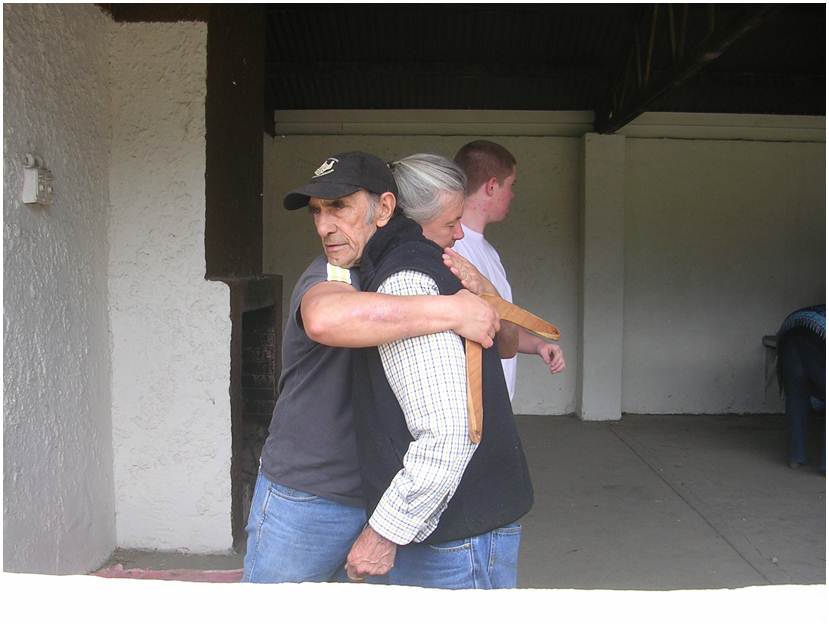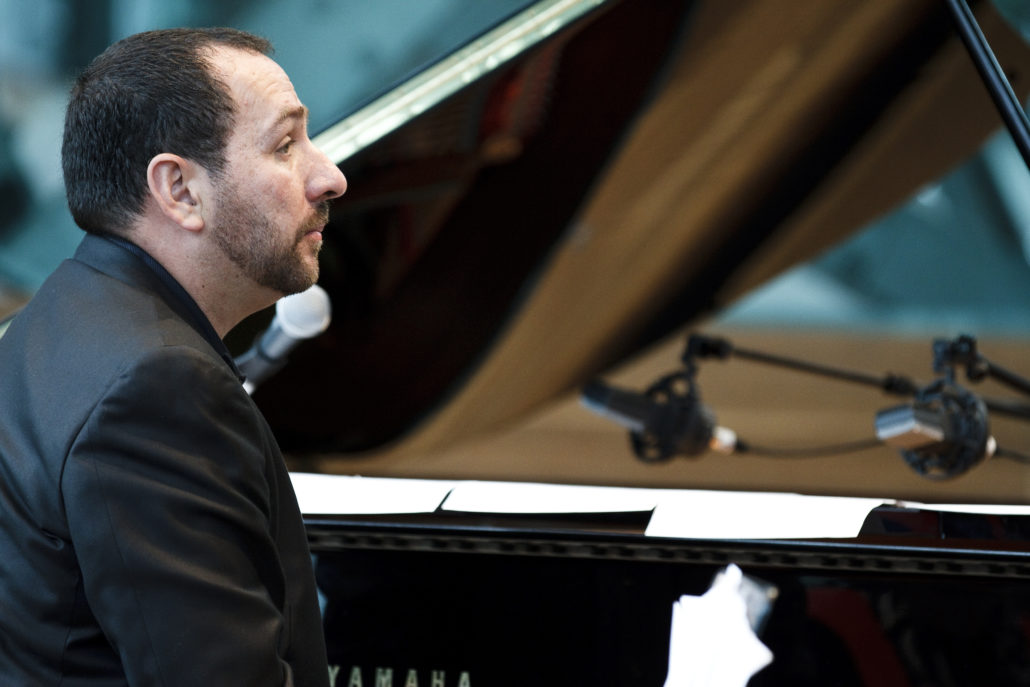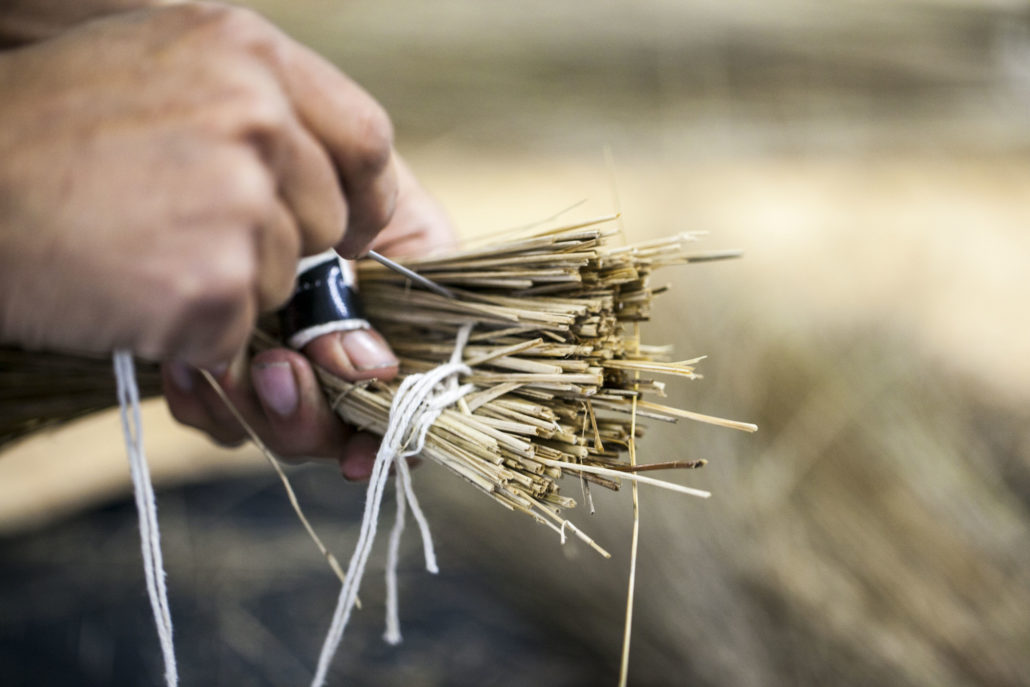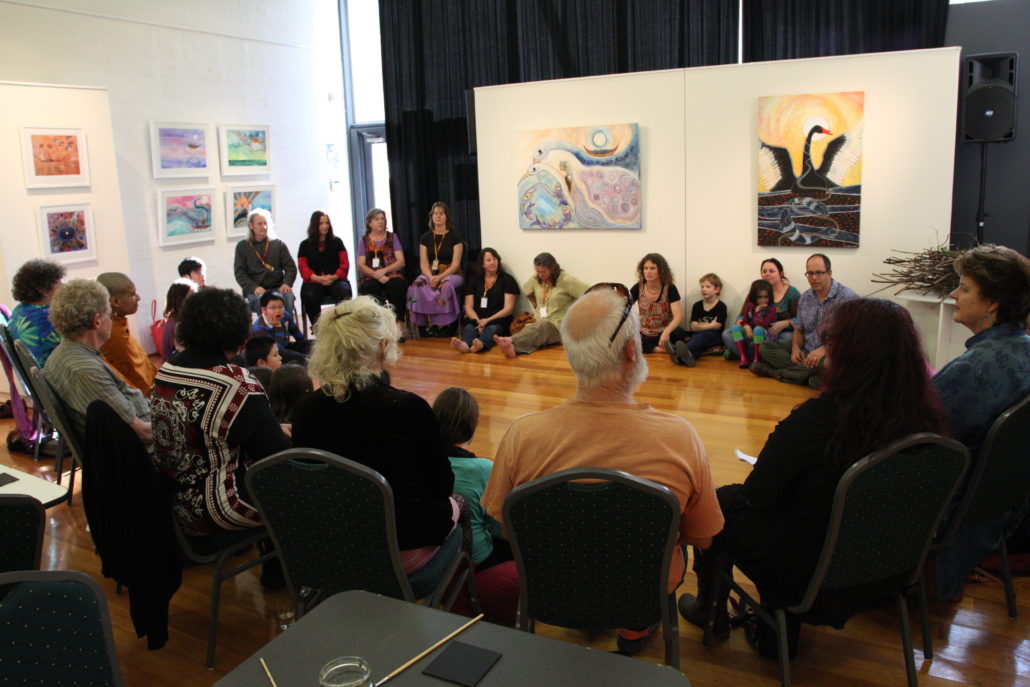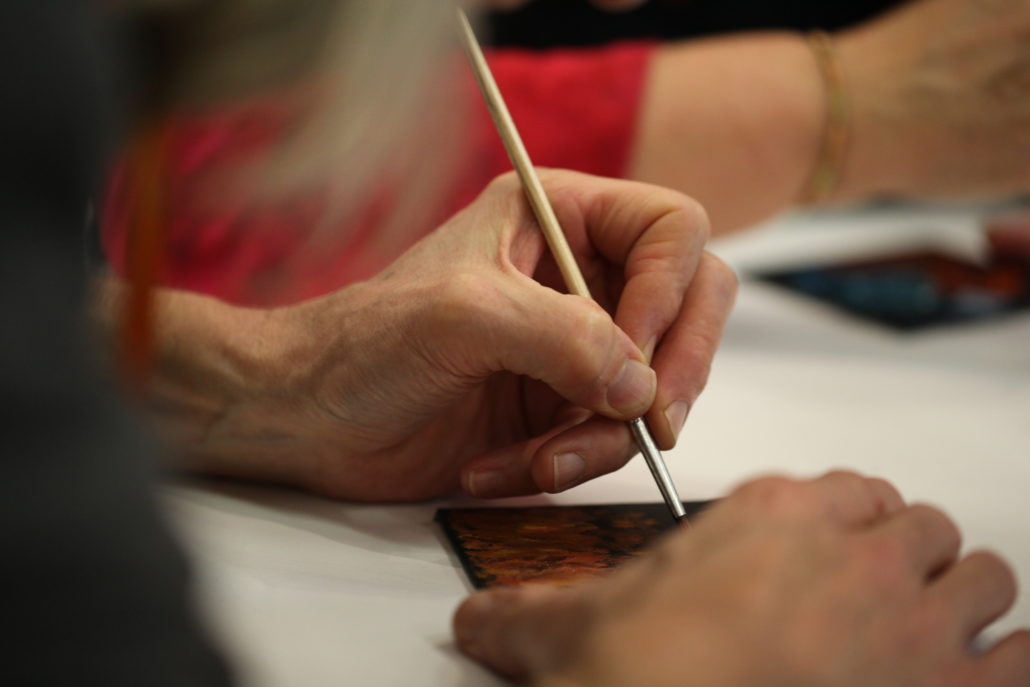Deep Listening
Deep Listening involves listening respectfully in ways which build community. Deep Listening appears in many different cultures and contexts, including learning, research, intercultural arts practice, musical improvisation and community development. Taking the time to invest in relationships lies at the heart of Deep Listening.
There are words for Deep Listening in many Aboriginal languages in Australia. In the Ngangikurungkurr language of the Daly River in the Northern Territory, the word for Deep Listening is ‘Dadirri’ and in the Yorta Yorta language of the Murray River in Victoria, it is ‘Gulpa Ngawal’ In Gunaikurnai Country in Gippsland, Victoria it is ‘Molla Wariga’. Deep Listening recognises that art, song, story, music, dance, poetry, language, identity and Connection to Country are one idea within Aboriginal culture.
Core characteristics of Deep Listening are:
- Respect underpins our relationships with each other and with the land;
- Time is invested in relationships and the building of trust;
- Our understanding of ways of knowing is broadened and deepened;
- Creativity is embedded into the way we learn; and
- A quality of care infuses our relationships and our work with each other.
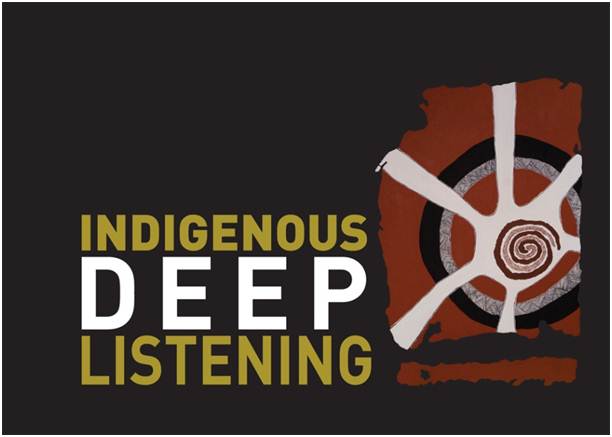
Deep Listening means paying attention to the spaces within and between stories. John Berger contends that we need to listen to what is said, what is not said, what is waiting to be said and what is crying out to be expressed (Berger 2008). Being aware in this way develops a critical awareness of our relationship to the stories being told or silenced.
As a learning strategy and as a research methodology, Deep Listening incorporates multiple ways of knowing and multi-vocal texts such as visual art, narrative, film, poetic text, theatre and music. It invites us to reframe how we learn, how we come to know and what we value as knowledge. Indigenous researcher Judy Atkinson, advocates a form of Deep Listening which brings a sense of responsibility to stories that are told. She stresses the importance of respect and relationality in the listening process, getting the story right and being in right relationship. In her view, Deep Listening means observing the self as well. At its deepest level, Deep Listening is the search for understanding and meaning (Atkinson 2001: 8).
Ron Murray, a Wamba Wamba musician, story-teller and artist is a member of the Living Circle Community. This is his understanding of Deep Listening:
For Aboriginal people, Deep Listening comes naturally
It’s about walking on the land
Softly, quietly
And listening to the stories around the campfire
Listening to the Elders
Listening to the teachers
Respect for Elders and respect for all people
And giving everyone the time
We’ve got to listen to the wind in the trees
Listen to the birds
It’s the feeling of a gift
A gift always comes back
At Deep Listening events, Ron Murray tells stories, plays didgeridoo and collaborates with jazz pianist Steve Sedergreen and jazz drummer, Mike Jordan. From the perspective of a musician, Mike describes Deep Listening this way:
Deep Listening to me is a multi-faceted form of listening
It isn’t only listening with your ears
But listening with your eyes
Your heart, your soul, your whole being
Everything
Our responses are as honest and strong and clear as we can play them
Heartfelt and important
Steve Sedergreen, also sees Deep Listening as central to his process of jazz improvisation:
Deep Listening to me is where you’ve got to start
Deep Listening means opening my heart and listening
Sometimes I might just leave some space
We just go where the music takes us.
It’s like a free fall which can go in many different directions
It can be stimulated by an essence in the room, by spirit or by words
It feels like we have become one
The process of being an improviser is about playing in the moment
It’s also about pushing the boundaries
The stage is a very spiritual place for me
The concept of respect is central to Deep Listening and when applied to community development practice, it is about working with commonalities and with differences. Community development theorist, Otto Scharmer, advocates listening practices that align closely with the concept of Deep Listening. He contends that when we are present, we are available to tune into other people and to our context. He refers to this as ‘presencing’ – a term that blends ‘presence’ and ‘sensing’ (Scharmer 2009). Scharmer contends that a kind of deepened presence gives access to greater levels of authentic awareness, new dimensions of power and a clearer direction. It bridges inner experience and collective experience in creative, non-linear ways. Otto Scharmer describes four types of listening (2009: pp. 7-8).
- Downloading – confirms what you already know
- Objective or attentive listening – paying attention to what differs from your own concepts
- Empathic listening – seeing the world through someone else’s eyes
- Generative listening – listening from the emerging field of the future – getting ourselves out of the away in order to open a space.
Scharmer’s concept of Generative Listening aligns closely with the Deep Listening approach. Deep Listening draws on every sense and every part of our being. It involves opening a space in which genuine contact can be made. The paradox is that the more we are present, the more we are able to get out of the way and become available for other people.
From the African tradition, researcher, Jon Roar Bjorkvold, describes a Swahili word ‘Sikia’ in a way which resonates with the concept of Deep Listening. He translates it as ‘integrated sensing’. ‘Sikia’ refers to a single complex experience in which one simultaneously sees and hears, pays attention to, notices, understands, perceives. He argues that it is a Western construct to encourage specialisation and the division of sensation into collections of isolated skills that can then be mapped and studied one by one. African thought, he claims, makes no clear-cut distinction between subject and object, between mind and body, between self and world. In the African paradigm, life-force, sound and word are identical (Bjorkvold 1992).
According to the Taoist Chinese Buddhist tradition, the concept of Deep Listening is also deeply relational. It can be represented by the Chinese characters – Listen (Ting) and Respect (Jing).
敬 聽
These characters incorporate the ideas of Heaven, People, Earth, Ear, Eye, Heart, Respect, Authority, Ten, One and the relationships between all of these. Traditional Chinese characters each carry a story with multiple layers of meaning. The story in each character only reveals itself if you’re looking for it and there are many interpretations to each story. According to the Tao, the layers of meaning in this combination of characters that represent Deep Listening involve:
Knowing our position in relation to Heaven and Earth
Listening in the context of surroundings – Land, People, Heaven and Earth
Oneness of mind and heart
Being connected to all things
Relationality to the Land
Understanding relationality
Giving your undivided attention
Giving yourself wholeheartedly
Involving total dedication
(Ching Tan & William Wu 2012)
We have explored the concept of Deep Listening both in Australia and Canada with respected community leaders in both countries. Bob Breaker, a former Siksika Nation Chief, shared with us that in his Siksika language and culture, the concept of Deep Listening also existed.
In his tradition, there are different layers of Deep Listening:
Istsiwakakkit – Listen to me
Sopoyaapistsiyiita – Listen carefully
Niitaapsopoyaapistsiyiita – Really listen carefully.
He described a fourth even deeper layer which involved listening to those who have died. Access to this level of Deep Listening brings with it guidance as well as enormous responsibility. Audrey Breaker described a related Cree concept ‘Meyopimiwatsiwin’ – Living in Harmony and a Blackfoot concept ‘Mokakoyis’ which translates as ‘Dwelling in Wisdom’ (Audrey & Bob Breaker 2009). These concepts reveal the links between language, land, knowledge and how to live.
What is shared across different cultures and contexts, is that Deep Listening invites us to be fully present to each other. In our projects, we facilitate Deep Listening Circles which are designed to be inclusive and to generate a sense of belonging and community. We encourage participants to learn respectfully together. This involves getting out of the way in order to open a space in which genuine contact can be made. That space is a place of possibility.
References
Atkinson, J. (2001). ‘Privileging Indigenous research methodologies’, Paper presented at the National Indigenous Researchers Forum, University of Melbourne.
Berger, J. (2008). In conversation with Ramona Kaval, The Book Show, Radio National, Australia.
Bjorkvold, J.R. (1992). Creativity and Communication, Song and Play from Childhood through Maturity HarperCollins, New York, USA.
Murray, R. (2008). Oral Communication, Cross-Cultural Exchange, Banff, Alberta, Canada.
Jordan, M. (2010). Oral Communication, Deadly in Gippsland Conference, Sale, Victoria.
Tan, C. & Wu, W. (2012). Oral Communication, Swinburne University, Melbourne, Victoria.
Breaker, A. & B. (2009). Oral Communication, Koorie Heritage Trust, Victoria & Banff, Alberta, Canada.
Scharmer, O. (2009). Theory U: Leading from the Emerging Future, Berrett-Koehler, San Francisco, USA.
Sedergreen, S. (2010). Oral Communication, Deadly in Gippsland Conference, Sale, Victoria.
